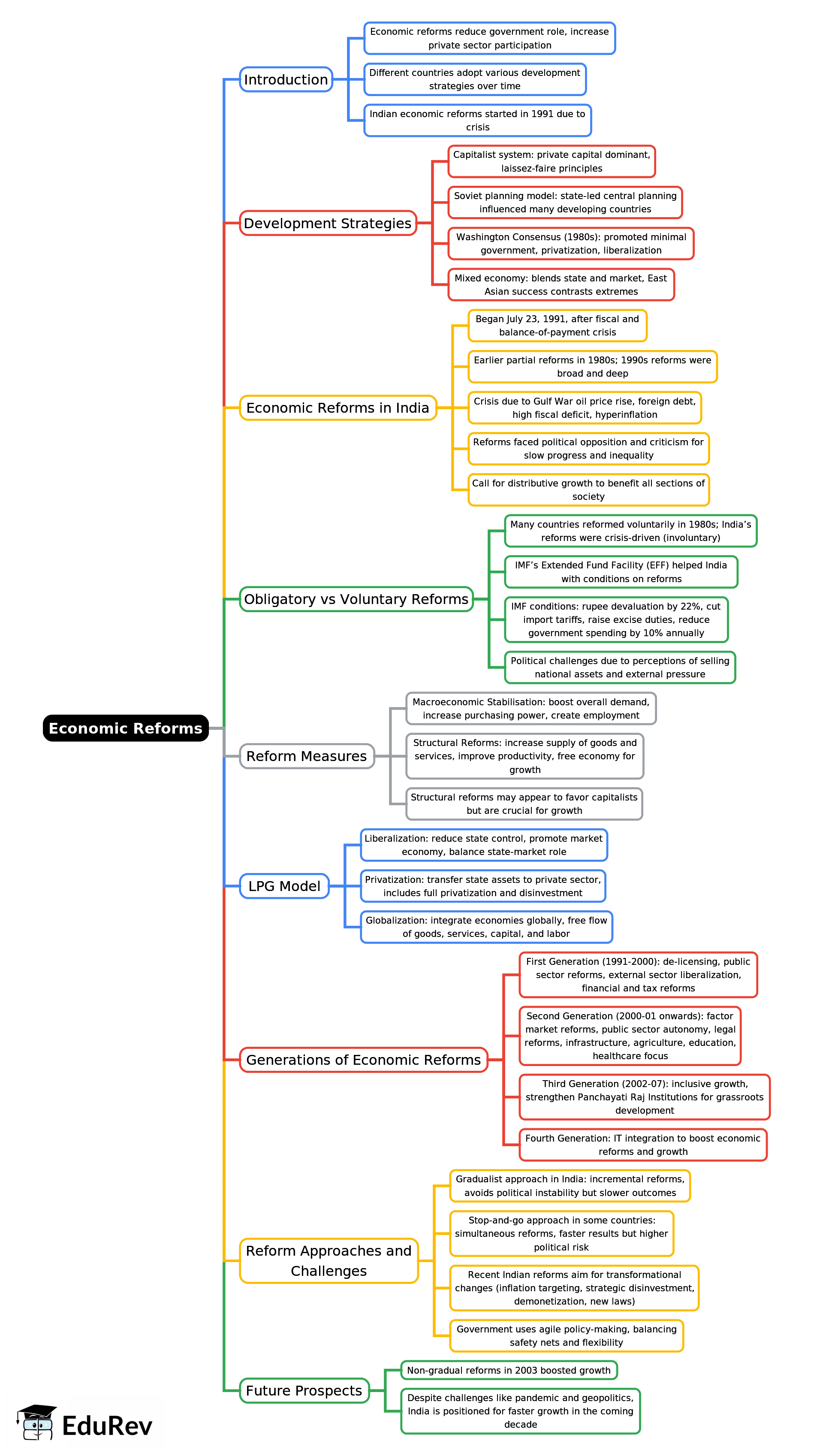UPSC Exam > UPSC Notes > Indian Economy for UPSC CSE > Mind Map: Economic Reforms
Mind Map: Economic Reforms | Indian Economy for UPSC CSE PDF Download

The document Mind Map: Economic Reforms | Indian Economy for UPSC CSE is a part of the UPSC Course Indian Economy for UPSC CSE.
All you need of UPSC at this link: UPSC
|
108 videos|425 docs|128 tests
|
FAQs on Mind Map: Economic Reforms - Indian Economy for UPSC CSE
| 1. What are the key objectives of economic reforms in a country? |  |
Ans. The key objectives of economic reforms typically include enhancing economic growth, increasing efficiency in resource allocation, promoting competition, reducing poverty, and improving overall living standards. These reforms aim to create a robust economic environment that fosters innovation and investment, ultimately leading to sustainable development.
| 2. How do economic reforms impact unemployment rates? |  |
Ans. Economic reforms can significantly impact unemployment rates by creating a more flexible labor market and encouraging job creation through investment and entrepreneurship. Reforms that reduce regulatory burdens can make it easier for businesses to operate and expand, which often leads to increased hiring. However, some reforms may also cause short-term job losses in sectors that are less competitive.
| 3. What role do privatization and deregulation play in economic reforms? |  |
Ans. Privatization and deregulation are crucial components of economic reforms. Privatization involves transferring ownership of state-owned enterprises to the private sector, which can lead to increased efficiency and innovation. Deregulation reduces government intervention in markets, promoting competition and allowing businesses to operate more freely, which can stimulate economic growth.
| 4. How do economic reforms affect foreign direct investment (FDI)? |  |
Ans. Economic reforms often create a more favorable environment for foreign direct investment (FDI) by improving infrastructure, reducing bureaucratic obstacles, and enhancing legal protections for investors. These reforms can increase investor confidence, leading to higher levels of FDI, which can contribute to economic growth and job creation in the host country.
| 5. What challenges do countries face when implementing economic reforms? |  |
Ans. Countries may encounter several challenges when implementing economic reforms, including resistance from vested interests, social unrest due to changes in employment and welfare, and the need for substantial political will. Additionally, there may be issues related to the capacity of institutions to manage and sustain reforms effectively, as well as the potential for short-term economic disruptions during the transition period.
Related Searches
















